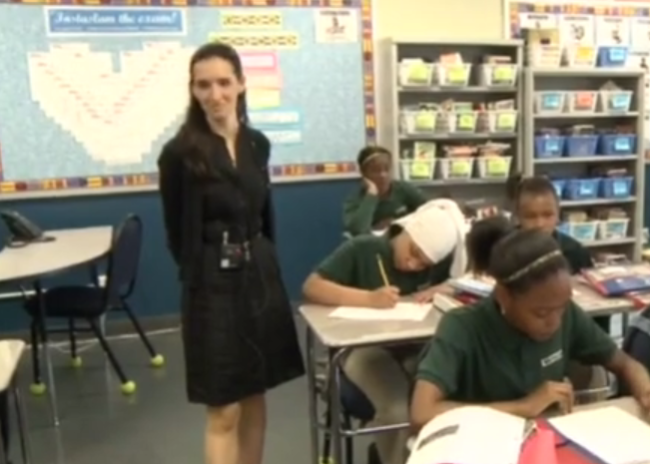07.02.15Kathryn Orfuss: Using Radar when Everything is Going Well (Video)
 At TLaC Towers, high above the teeming streets of our tiny little upstate hamlet, summer vacation means time to kick back, relax, and, well, analyze video of great teachers. In that sense it’s just like the rest of the year except there are flip-slops and people get sassy with the ironic nicknames… well, Jen Kim, one of our superstar video analysts, does (see below). Last week we watched North Star Academy’s Kathryn Orfuss teach a great lesson from which we took many useful lessons.
At TLaC Towers, high above the teeming streets of our tiny little upstate hamlet, summer vacation means time to kick back, relax, and, well, analyze video of great teachers. In that sense it’s just like the rest of the year except there are flip-slops and people get sassy with the ironic nicknames… well, Jen Kim, one of our superstar video analysts, does (see below). Last week we watched North Star Academy’s Kathryn Orfuss teach a great lesson from which we took many useful lessons.
Jen shared these thoughts.
In Teach Like a Champion 2.0, Doug, or D-Lo as I like to call him around the office, writes, “The first step to preventing nonproductive behavior is to consistently see it when it happens.” That’s Radar. D-Lo goes on to talk about an idea he learned from observing how his own middle school teachers kept him in line: Be Seen Looking is the art of subtly intimating to students that you see (and care about) what they do.
But watching Kathryn Orfuss, of North Star Academy Vailsburg Middle School, reminded us of something at least as useful–that you can (and should) use Radar and Be Seen Looking (BSL) before there’s anything to look for, that is, when everything is going right in your classroom. This brings to mind the old adage “an ounce of prevention is worth a pound of cure.” It’s much better to prevent a problem than have to fix it!
Take a look at what Kathryn does:
Orfuss Radar BSL from Uncommon Schools on Vimeo.
This video is about Orfuss Radar BSL
In cut one, we see Kathryn doing some text book BSL moves. She scans her class with a swivel from the back of the room, for example, but what’s interesting here, is that she’s communicating with her affirming smile to her students that everything is going well and the students are doing a great job. Her positive touch towards the end of the cut is a quick and simple way for her to “catch it early” to ensure her students maximize their independent work time. Thus, she is keeping her use of Radar/BSL in the preventative (rather than the ‘reactive’ or ‘corrective’) zone.

In the next cut, Kathryn uses her Radar/BSL moves as she circulates during teaching. She scans to check those blind spots around the edges of the room. She wants to “catch it early” during those critical moments where she is multi-tasking and focused primarily on ensuring students are reading accurately and fluently.
It can be harder at certain times in your lesson to remember to watch what’s happening in your room, and this is most challenging when your attention is on something else (when you’re explaining something; as you’re Circulating to Check for Understanding during independent practice; when you’re helping a student with a tricky math problem). As we see in cut 3, Kathryn is able to scan with a swivel while she’s at her document camera in the front of her room jotting down the key ideas of the lesson. Because Kathryn scans as she’s writing, she is able to respond early (with a non-verbal and a lightning quick public correction, “Rashaan make sure you’re with me”) to keep her classroom a productive and positive place.

Our take away from this Fabulous FRESH CLIP is that great teachers also scan when they think everything is going right, not limiting their BSL/Radar to the moments when they are in transition or expect students to struggle. In fact, when everything is going right might just be the best time to scan and observe: maximum prevention; maximum positivity. Thanks for the primer, Kathryn!
